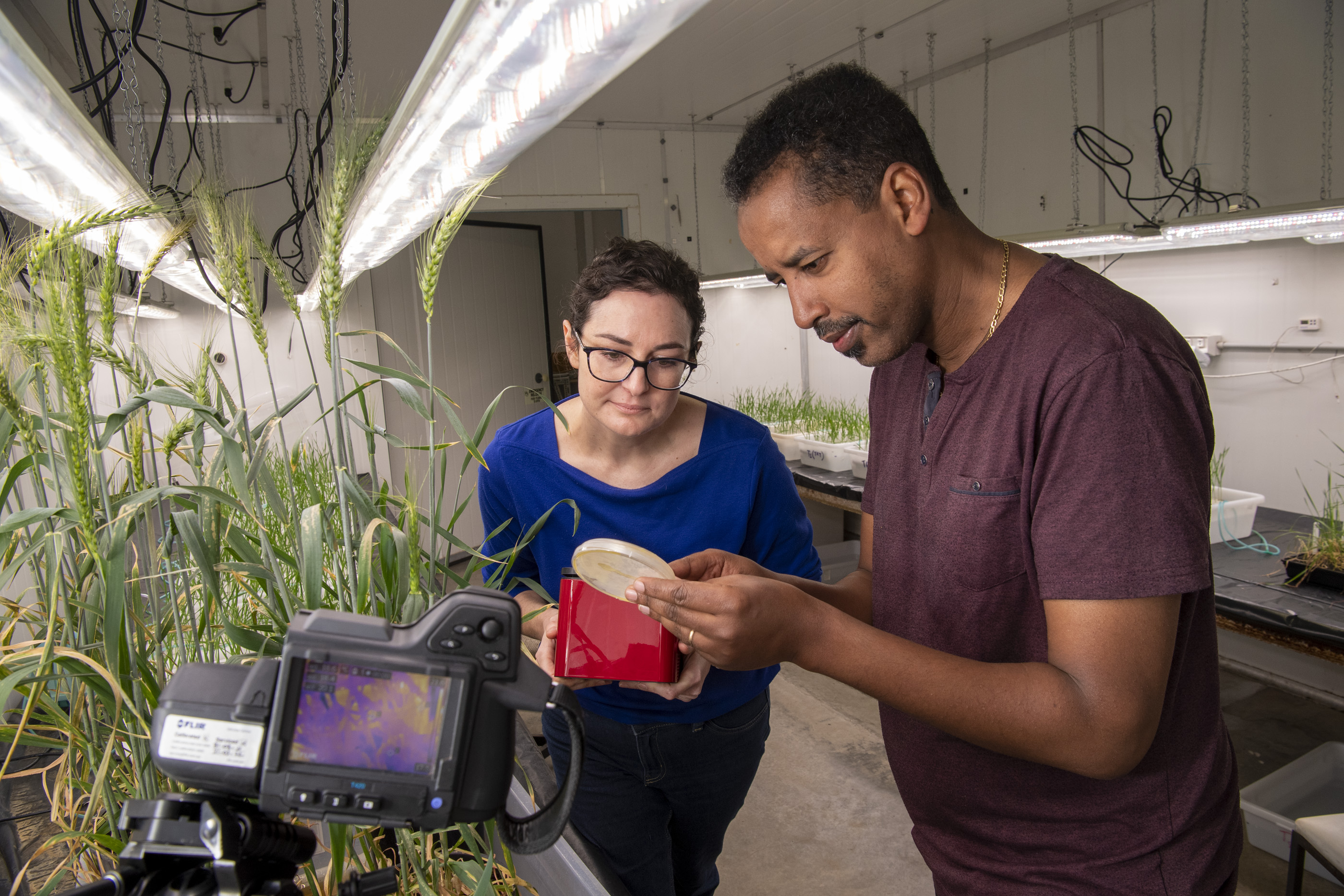
The Department of Primary Industries and Regional Development (DPIRD) developed the test, based on the discovery of a molecular marker to identify and quantify ice nucleating bacteria (INB) that elevate the risk of frost damage.
The INB produce a protein that mimics an ice nucleus – where ice is formed – acting as a template that attracts water molecules and builds the size of the ice crystal.
The molecular marker is used when undertaking a quantitative polymerase chain reaction (qPCR) test to detect INB on and within the leaf surface.
DPIRD research scientist Esther Walker said the great advantage of the INB qPCR test was that it could be undertaken in the paddock in just 40 minutes, compared with the conventional process that takes at least a week.
“By targeting a small region of the ice nucleating gene, we were able to successfully develop a marker that identified the presence of these bacteria,” Ms Walker said.
“Combining this marker with a portable qPCR device means we can determine bacterial numbers accurately and rapidly in the paddock, without the need to transport samples back to Perth.
“This innovation will provide researchers with valuable information on the presence and distribution of INB over the growing season in a matter of hours, opening the door to get a better understanding on the interplay between the plant, INB and environment.”
The answers to these questions will assist plant breeders to develop new grain cultivars that are resistant to INB, as well as help scientists devise effective crop management strategies and applications to reduce frost risk.
The INB qPCR tool was developed as part of a one year DPIRD initiative to identify and quantify INB from samples collected from WA cropping systems and was associated with a larger, three year Council of Grain Growers Organisations project.
The research is now being advanced as part of a three year DPIRD project to examine the use of chemical and biological products that inhibit INB to reduce the risk of frost, with co-investment from the Grains Research and Development Corporation.
DPIRD research scientist Amanuel Bekuma said preparations were underway to test up to eight products at the department’s Dale research site and in a controlled environment facility at South Perth.
“The wheat and barley used in the trial will first be treated with two strains of the INB to ensure they are suitably infected to assess the bacteria’s response to the various treatments,” Dr Bekuma said.
“The treatments will then be applied at the recommended rate at different growth stages, mostly during frost susceptible stages and/or prior to a frost event, and plant responses recorded.”
DPIRD will also continue research assessing how wheat genotypes vary in their ability to host INB, building on previous findings that suggest variation occurs with seedborne INB populations.
The new initiatives build on DPIRD research that identified older leaves of wheat and stubble where INB infection could trigger freezing at temperatures as warm as -4.7 and -5.7C respectively, while uninfected plants can remain supercooled up to -8C.
Frost damage is estimated to cost Australian growers between $360-700 million in crop losses per annum.
DPIRD supports WA grain growers to address the risk of frost through research, as well as providing online tools and advice available via www.agric.wa.gov.au/frost/frost-tools-and-support.
Picture caption: DPIRD research scientists Esther Walker and Dr Amanuel Bekuma examine a specimen for a new qPCR test to identify and quantify ice nucleating bacteria, which elevate the frost risk to plants.


